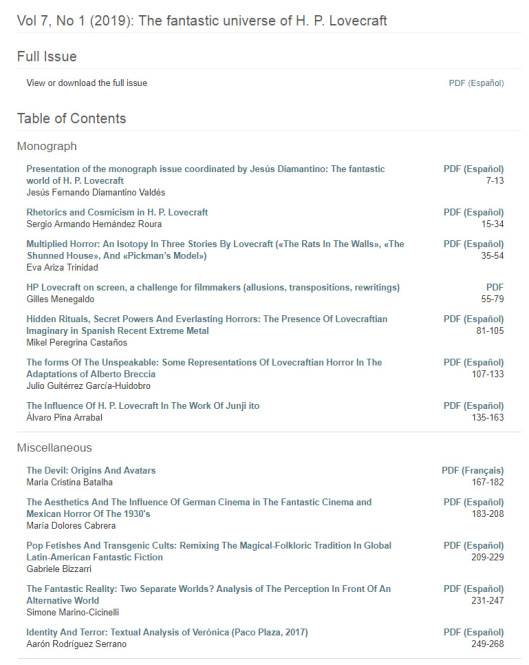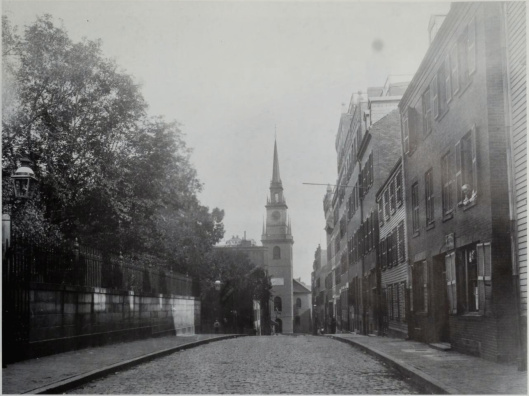It’s time for another monthly summary. Here in the UK the delightful sunny Maytime weather vanished for nearly all of the month. To be replaced by a typically English cool and ‘moist’ June. This ‘settled in’ and offered many a misty and mizzling dawn, attenuating away into a grey distance. 15,000 words were launched into this grey aether from Tentaclii Towers, opening with the popular post “Lovecraft’s bloody fingerprint”. In which a new partly-unpublished postcard from Lovecraft was noted and a fingerprint spotted on it. Despite the resulting big boost in traffic, my Patreon is still at only 16 people, though they kindly give $51 a month.
I’m pleased to report that a little bit of the Patreon helped me to bag a very cheap first-edition hardback of the de Camp Lovecraft biography, having previously only had the Gollancz ebook reprint which appeared on Amazon a few years ago. The 1975 hardback is said to have 20,000 more words than all later editions, and also has scholarly endnotes which pinpoint which letter or source he used. A bonus is that despite its price it isn’t a mauled-about ex-library copy. It’s in rather nice crisp condition in un-yellowed mylar wrapper, with only a corner-clipped dust-jacket to indicate it was probably once in a remaindered bookstore in the late 1970s. It’s a fat book, but despite my ‘small letter-box, block-of-flats’ delivery hurdle I was able to get the book via a hassle-free route.
This month my blog noted many books newly published or new-in-ebook included Frank Belknap’s Long memoir Dreamer on the Nightside in ebook via Amazon, Joshi’s expanded Weird Fiction in the Later 20th Century, and precise details of what’s in Joshi’s new The H. P. Lovecraft Cat Book. Plus a rich crop of new journal-books such as Windy City Pulp Stories #19, Lovecraftian Proceedings #3, Dead Reckonings #25, and the new Lovecraft issue of the academic journal Brumal. I also posted advance news of reprints such as 1991’s H.P. Lovecraft: Against the World. In the archives, I found a free scan of Index To The Verse In Weird Tales, plus a rare on-the-spot article by someone who met the bookseller Irvin Binkin (who saved so much Lovecraft material in the early 1970s) and had visited his final bookstore.
Various scholarly items and notes were posted here, including calls, an essay contest and research fellowship opportunities for 2020. Three more items were found and added to the Open Lovecraft page.
Several items of Lovecraft comics news appeared here. I’m now editing a monthly publication for comics-makers, as well as Digital Art Live magazine, so my interest in the better type of comic is higher than usual. I’ll be interviewing comics-makers for the new publication, so please comment and suggest names of non-gore comics makers you may know. We’re especially interested in people who use digital workflows, possibly involving 3D models.
Various art scans were posted, plus the call for the Ars Necronomica art-show to be staged at NecronomiCon 2019 later this year. A big Beardsley show at the Tate in London was noted, as was the release of the major Lovecraftian videogame The Sinking City.
I instituted a new regular themed post here: “Kittee Tuesday”. This will feature artistry involving fantasy, sci-fi and horror cats, and these will often be forlorn kittees I’ve rescued from the stygian blackness of forgotten archives.
In music and audio, noted items included the CD Sonnets of the Midnight Hours; the release of Dark Adventure Radio Theatre’s The Lurking Fear; Graham Plowman’s Lovecraftian classical music; and Lovecraft’s Murray Ewing’s retro sci-fi soundtrack album, Future City. Also linked where a couple of podcast episodes, and the first of the Howard Day videos.
My post “Whose work is entering the public domain in 2020?” was, I hope, a useful post for readers who are also publishers or artists.
My archival investigations led me into Lovecraft’s Red Hook, and I discovered that the real demographics of the place fitted those that Lovecraft described. In all but one respect. Having one of his protagonists in the story be Irish, he thus switched the Irish in the Red Hook population to ‘Spanish’ in his introductory scene-setting. Otherwise, Lovecraft’s Norwegians, Syrians and others were not figments of his overheated imagination, as some have claimed. Maps and pictures of the area were uncovered, and this post was followed by the 1,700-word Patreon-only post “Lovecraft and The Cult of the Peacock Angel”. That was on the topic of Lovecraft’s use of the Yazidis in the story “Red Hook”, and the surrounding historical context in the 1920s.
Other new discoveries this month were the address of the store where Lovecraft concluded his epic hunt for a cheap suit, after his clothes were stolen, and the location of a photo of the store interior (though not the photo itself). I also found a 1933 photo of a “biggest selection in the city” “50,000 magazines” store on Fulton St., Brooklyn — I can’t imagine this place was unknown to the Lovecraft Circle. If just one of the Circle had spotted it, then he would have told all the others.
New historic pictures made inside the Ladd Observatory were also noted, found over on the Observatory’s blog.
More importantly, in terms of influence Lovecraft’s major stories, I discovered that the Cloisters had been a significant antiquarian site for Lovecraft while in New York. This post led to a similar finding to that of my Yazidis essay, namely that mainstream academic scholarship was narrowing the scope that Lovecraft had for reader-friendly stories of devil-worshippers and the medieval gothic, and thus that ‘the times’ were pushing him to be radically more inventive by 1925/26. “Cthulhu” was a response not only to modernism, or to the new scientific discoveries, but also to strong and sudden shifts in ethnographic and medieval scholarship in the mid 1920s.
Password-protected Patreon-only posts, this month, were:
* “Lovecraft and The Cult of the Peacock Angel” (Lovecraft’s use of the Yazidis in “Red Hook”, and surrounding historical context in the 1920s).
* The Plot Genie (on a ‘plot-writing machine’).
* My Patrons on Patreon will also find a large printable version of “H.P.L. in N.Y.C.” (showing Lovecraft in Puritan garb, with the Brooklyn Bridge in the background), on the Patreon blog.
Giving just $1 a month both supports Tentaclii, and also gets you access to posts like these. You can also support my work simply by telling your friends about Tentaclii, especially if you know them to be generous with their Patreon account! There must surely be some people out there with a stash of $13k bitcoins in their wallet, and who are thus feeling just a bit more generous than usual.






















